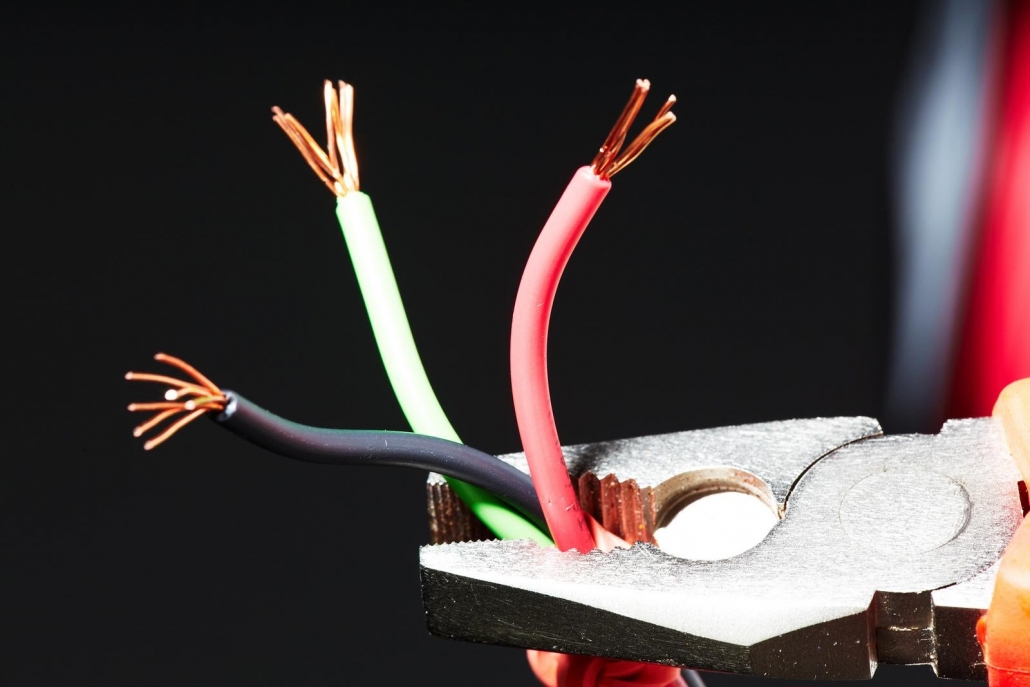Top 5 Electrical Mistakes Found When Rewiring Your Home
Whether you are moving into an older home or revising your current home, it is important to be aware of any electrical mistakes that may exist. Previous homeowners or occupants may have upgraded electrical equipment without prior knowledge of safety measures and codes. Even electricians themselves could have made mistakes in wiring, especially if the work in your home was done over 30 years ago. There may be components in your home that are outdated and not up to code. Whatever the case may be, it is always wise to seek the advice of a trusted and experienced electrician who knows the ins and outs of electrical safety by heart. Read below to find out ways you can improve electrical components in your home:
- Wire that was cut too short
- 3-slot receptacles installed without a ground wire
- Improper support for outlets and switches
- Sheathed-cable left exposed and unprotected
- Connections made outside an electrical box
1. Wire That Was Cut Too Short
This is one of the most common mistakes made in electrical work. Wire that is too short becomes difficult to work with, creates poor connections and can lead to potentially hazardous situations. Wires should protrude at least 3 inches from the box, up to 6 inches to prevent overcrowding. There should be enough wire to strip adequately, connect securely and fold over within the box. Without this wiggle room, wiring can short circuit, overheat, and cause other electrical faults.
Solution: 6 inch extensions can be added to existing wire. Our electricians can easily eliminate potential fire hazards by installing wire connectors in tight spaces.
2. Three-Slot Receptacles Installed Without a Ground Wire
Two-slot outlets are slowly becoming obsolete because they are not grounded. If you have two-slot outlets and use appliances with three-pronged plugs, it may seem reasonable to simply replace the outdated receptacle with a three-prong receptacle. The truth is, without a ground wire, the updated outlet will be no safer than the outdated two-slot outlet. To determine if your outlet is grounded or not, use a tester–available at hardware stores and home improvement centers. The tester will indicate whether or not the outlet is wired correctly, as well as any other existing faults.
Solution: Leave two-slot receptacles in any ungrounded box. If you find any three-slot receptacles in an ungrounded box, replace them with two-slot outlets; this is safer than having a three-slot receptacle without a ground wire. For areas of your home that require three-prong outlets, consult a trained professional to properly replace the two-slot receptacle. Our licensed electricians are highly qualified to ensure proper grounding of all the outlets in your home.
3. Improper Support for Outlets and Switches
Aside from being unattractive and irritating to operate, loose outlets and switches are hazardous. Poor connections allow wires to get pulled or move around, and eventually loosen from their terminals. Loose wires can lead to overheating and arcing, which can cause short circuits and fires.
Solution: Rigid electrical box spacers fill in the gaps beneath the screws to make a tight connection from the outlet or switch to the box. Small washers or a coil of wire wrapped around the screw can also fill in the space to create a secure fit. If the outlets have been loose for some time, have one of our electricians inspect the wiring to ensure the receptacle is functioning safely.
4. Sheathed-Cable Left Exposed and Unprotected
Plastic-sheathed cable needs to be protected from exposure between framing of the home. Cable that is run over or under wall or ceiling framing is particularly vulnerable because it can be easily damaged and become dangerous–so dangerous that electrical code states that it must never be left exposed.
Solution: A conduit made from rigid metal or flexible PVC tubing should protect the exposed wiring from damage. If you find exposed wiring between framing or along the walls, give us a call and we can help determine the best options for your home.
5. Connections Made Outside an Electrical Box
Wire connections should always be made within an electrical box. The purpose of an electrical box, or junction box, is to safeguard wires, people and property. They protect wires against accidental damage, and prevent electrical fire hazards by containing heat and sparks from loose connections or short circuits. Accessible junction boxes are required by code in most of the United States.
Solution: Install a box and reconnect the wires inside it. This can be done fairly easily, but if you don’t feel confident tackling the job by yourself, our electricians are available to help.
Our licensed electricians at Penna Electric are highly experienced in servicing older homes in the South Bay Area. We can help you troubleshoot electrical problems and provide the best remedies for the safety of your home. Always remember to approach electrical components with caution. If you notice any electrical safety hazards, please give us a call immediately.
Resources
A Simple Electrical Upgrade Can Upgrade Your Quality of Life
The right electrical upgrade can dramatically improve the value and appearance of any home or business. You’ll be amazed at what a difference the right electrical upgrade can make for your home or business. Make sure that when you select an electrical company to do the enhancement of your home and you have decided to take your enhancement to the level where you require an electrical upgrade that the technician at the company has a good working knowledge and the experience to properly guide you in this area.
When you decide to upgrade, our well-trained and certified electricians have all the experience and training needed to complete your electrical panel upgrade project from start to finish, with a minimum of fuss or disturbance. Please contact us right away at 310-800-2401



